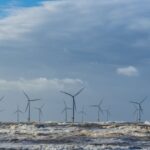Energy News Beat
As COP 28 winds down, the Canadian oil and gas industry is faced with the unenviable task of making sense of the declarations, plans, proposals, and unrealistic promises and attempting to chart a path forward.
Global leaders aggressively addressed oil and gas methane cuts using a one-two punch of financial incentives and strict new regulations and yet failed to convince the world to abandon coal. Coal-intensive countries like South Africa and Indonesia backtracked on commitments (as reported by the Wall St Journal) with China showing no signs of slowing down – permitting more coal power plants last year than any time in the last seven years, the equivalent of about two new coal power plants per week with construction started on half of those plants this past summer. As reported by Reuters, China’s top climate diplomat declined to say whether the country could agree to eliminating coal, oil and gas.
It was refreshing that oil and gas companies had some presence at the conference. Fifty oil and natural gas producers including Saudi Aramco and 29 other national oil companies attended and signed an agreement to reduce carbon emissions to net zero by 2050 and curb methane emissions to near-zero by 2030. Although he electrified attendees and media with pre-conference comments, COP28 President, Sultan Al-Jaber brought an informed voice to the conference and qualified his position telling reporters last Monday, Dec 4th, “I have always been very clear on the fact that we are making sure that everything we do is centered around the science.”
The US laid out their plan at COP28 to slash greenhouse gas methane from oil and gas and Canada announced an oil and gas emissions cap with reductions by more than one-third within seven years. In a December 10th interview on CTV’s question period, environment minister Guilbeault boasted “It’s a first …not only has it never been done in Canada We are the first oil and gas producer (ie producing country) in the world to do that.”
As the “tua culpa” and the “tua maxima culpa” were assigned and penance doled out with agreements reached on the contentious Climate-Damage Fund, discussions began to surface on quantifying the costs.
Texas-based public policy analyst/consultant David Blackmon asked in a recent Forbes article, “Where will all this money come from?”
“Much of the concern centers on the rising cost of capital and whether the world can even afford the stunning price tag of the transition,” Blackmon states. “Cost estimates range from $110 trillion (per the Energy Transitions Commission) to $275 trillion (McKinsey & Co.), the latter of which represents roughly 2.6 times total global GDP for 2023… For some context, the U.S. Inflation Reduction Act contained about $369 billion in subsidies and tax breaks for green energy investments over a 10-year time frame, or about 1/90th of the total global investment required during that time according to the estimate by the Energy Transitions Committee. It would take almost 250 IRA-sized tranches of money to meet the levels of investment envisioned by McKinsey & Co.’s estimate.”
Blackmon points out that the cost of raising capital has doubled since the 2022 McKinsey estimate and the magnitude of the problem is clear. There are incredible challenges to raising the level of capital required. He also points out that most of the capital would come from developed nations that are already deep in “near-overwhelming levels of national debt”.
Investors and consumers in Europe and the UK have not been happy with the costs of replacing fossil fuels with renewable energy. Predictions that the transition to net-zero carbon emissions could be an economic boon have faded as the costly economics of climate mitigation are revealed.
As French economist Jean Pisani-Ferry wrote in a report commissioned by the French prime minister and released in English in November: “By putting a price – financial or implicit – on a free resource (the climate), the transition increases production costs, with no guarantee that the reduction in energy costs will eventually offset them, while the investments it calls for do not increase productive capacity but must nevertheless be financed.”
Canadian oil and gas companies are left to ponder the ramifications of the many COP 28 declarations and decisions and chart a path forward.
In this “climate” of economic uncertainty for oil and gas, a recent Canadian Energy Geoscience Association presentation by Brad Hayes, President at Petrel Robertson Consulting Ltd titled “21st Century Energy Transition- Reconsidering Goals” had some great insights for the industry.
If you agree that context is the social system or structural framework in which a conversation takes place, Hayes’ talking points fit well into the context of the COP 28 aftermath.
Hayes called for a more careful consideration of the goals that societies, governments, and technical people set out in terms of where societies are going in the 21st century on energy and ultimately asked “Are we approaching energy transition the way we should? Or should we reconsider the goals that we have in front of us?”
He charted data from the early beginnings of the energy transition to 1800 when the only source of energy was traditional biomass. In the 1800s, coal entered into the equation and by 1900 coal and wood were being used. But as people were using just as much wood as before, coal was being employed in addition to wood to power steam engines on land and at sea. He makes the point that societies began expending a lot more energy as they discovered forms of energy that were more amenable to new applications. This continued into the 20th century, with access to oil supply being a determinant factor for the Allies in World War One as they had a better supply of oil than the other side. He traced the implementation of natural gas and later in the century, the implementation of hydropower and nuclear power – which emerged in the mid-20th century and grew fairly rapidly until a spate of nuclear accidents pit a pause on development. From the late 20th century to today, he charted the rapid rate of growth of renewables.
“What I think is the most important thing to note is that this energy transition that we’ve been undergoing for 220 plus years now is really an energy addition,” Hayes concludes. “We’re not using less of anything. We’re burning more wood and other organic material today than we did back in 1800 when it was the only source of energy. The reason is, that back then, there were fewer than a billion people on earth. Now there are more than eight billion people. So we just need more energy and like the addition of coal, every new energy form that comes in gives us access to new applications. Oil, for example, gave us fuels for aviation and vehicles. Coal was used for electrical generation, natural gas for electricity and petrochemicals. There has been no replacement of any energy form in the form of the energy transition. The forecasts for this year and next year are that we will consume more oil on a global basis than we ever have before and there’s no real reliable indicator of when that’s going to change.”
Hayes then turned his focus to the 17 United Nations Sustainable Development Goals (SDGs) and zeroed in on SDG goal #7 to “Ensure access to affordable, reliable, sustainable and modern energy for all”. Keep in mind that the SDGS are identifications of elements needed for everyone in the world, to have peace and prosperity and an opportunity to live a decent life including things like access to food, access to clean water, access to political freedoms, education etc. Hayes identifies goal #7 as energy security and identifies it as one of the most essential goals and asks “How do we provide enough energy to meet human needs around the world?” He also identifies a critical definition of sustainability that is not married to any particular philosophy saying “What sustainability means is we have plans that we undertake today that allow us to continue to make plans for the future so that future generations can meet their own needs.”
Hayes is critical of the over-emphasis on SDG goal#13 “Take urgent action to combat climate change and its impacts”. He argues that it is fruitless to pursue urgent action on climate change at the expense of the energy security prescribed by SDG goal #7.
“I think that we need to reach all 17 goals but we can’t reach any of them without #7. If we don’t have energy security, we don’t have the energy to combat climate change, or provide enough freshwater or to provide education and political freedom. If you go to any country in the world that doesn’t have energy security, where people are worried about getting enough electricity or even gathering enough fuel to burn to cook their supper that night. They’re not worried about many of the other goals. They’re worried about finding that energy. So we’ve got to be in that position of energy security and have the time to go around and say ‘Now, how can we achieve these other goals?’”
Hayes pointed out that all energy sources have benefits and challenges and addressed them in insightful detail that regretfully I have to leave out of this article due to constraints of length. He then turned his focus to some realities impacting energy transition that need consideration.
One is the reality that the 8 billion world population continues to grow. Despite a slowing rate of growth it is still growing and, depending on the projection you examine, it may grow to 9.2 or 9.5 billion later in the 21st century, requiring an addition to available energy as developing countries aspire to the level of energy-rich prosperity achieved in developed countries.
Another reality is that supply chains are critical for what Hayes calls “the creatures of the energy transition” – electric vehicles, solar panels, and batteries, that require doubling or even tripling amounts of resources like critical minerals -magnesium, copper, cobalt, lithium, etc. This situation leads to the need for new energy infrastructure.
“Building new energy infrastructure, like building new anything gets to be complicated as you get down to actually planning projects.” Hayes said as he addressed the timelines in various EU countries to obtain a government permit for a new facility.
“For onshore wind, the EU has a target of 24 months or two years to get a new onshore wind project through the permitting process, so you can start building. The real-time varies from about 30 months in Romania to 10 years in Croatia. Ten years just to get the permit, then you can start doing the front-end engineering and all the other stuff you need to do to build it. For solar, it is not nearly as bad but there are only three countries that can get a permit for a new onshore solar facility in less than two years. So again, it’s very difficult to imagine that we’re going to radically change the amount of energy that’s going to be delivered by these technologies five years from now or even ten years from now when just a simple permitting takes so much time.”
Hayes also examined the IEA Net Zero by 2050 report, issued in 2021 and updated in 2022 and the Western society’s focus on emissions. He pointed out that the goals specified in the report and update were aspirations.
“They (the IEA) promoted the idea that net zero emissions – greenhouse gas emissions reduction by 2050 would be a roadmap for the global energy sector. My question is, is it really? For example, in 2021, there would be no new unabated coal plants approved for development. In China, right now, I believe there are at least 15 or 20 under development today in 2023. I don’t know how many of them are innovative, but that is a miss. By 2025, sixty percent of car sales are prescribed to be electric with no new internal combustion car sales. So the question is again, is it a roadmap? Is it a set of plans that we need to follow to carry the energy sector forward? And you’re probably not surprised that my opinion is ‘No, it’s not relevant’. Because for any of the aspirations in the report or its revised version, there’s been no cost-benefit analysis of any of them. When you look at the supply chains, they haven’t thought about realistic timelines. My suggestion is that energy security requires plans for energy and sustainability means not only environmental issues, but it means doing things that meet the needs of the current generation without compromising the ability of future generations.”
Ultimately Brad Hayes left the audience with a crucial question – in light of his discussions and revelations of the facts and history of energy development, current and future use, infrastructure complexity, and growth of global population and demand… what should our energy goals be?
As we contemplate the deeper context and implications of the changes prescribed by COP28 declarations and prescriptions, some countries are questioning their validity – should we?
ENB Top News
ENB
Energy Dashboard
ENB Podcast
ENB Substack
The post Energy realities to consider as COP28 discussions wrap up appeared first on Energy News Beat.








